![]()
The shield is a hexagon very similar to that with white numbers on a blue field. It is always posted on a rectangular white field.

The shield is a cutout with white numbers on a blue field. Sometimes the state name may be above the number but that is not mandatory. The word "INTERSTATE" is white capital letters on a red field.
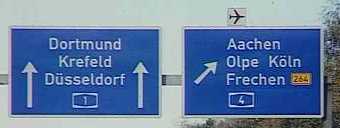
Blue: All guide signs on the Autobahn or at Autobahn interchanges on secondary roads are blue. On yellow guide signs, a blue plaque is used to indicate directions to the Autobahn. On blue guide signs, a yellow plaque is used in two instances: -on the Autobahn itself, a yellow rectangle with numbers is a Federal Highway shield.
-on secondary roads, on the Autobahn approach signs, a yellow plaque is used at the top of the sign to indicate the next destination along the secondary road.
White: Black on white is used to give directions to local activity centers (i.e. train stations, airports, downtown, etc.). A white plaque may be used for this on yellow or blue guide signs.
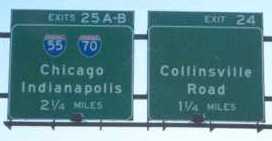
Green for the most part. Blue is used for service areas, orange is used for construction, and white is regulatory.
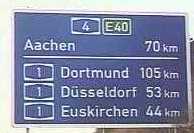
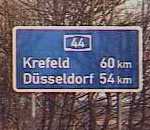
Left photo is a distance sign with distances of nearby autobahn's control cities. Right photo is just a standard distance sign.
All routes on section of highway are posted on the upper part of the distance signs. Distances to cities are listed in reverse order, with the city furthest away listed first. Sometimes, distance signs give out distances on cities on nearby autobahns.

Usually the nearest exit and control city. States don't post highway shields on the upper part of the distance signs, however, they may use shields of the nearby highways on the distance signs (i.e. Florida). An major town may also be mentioned on the distance sign, but some states don't do this. In some states, the route number is spelled out (much like the example above).
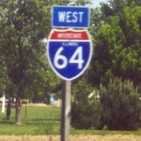
Used widespread. Some states have their state names on interstate shields, but a majority do not. The direction of the highway is also posted.
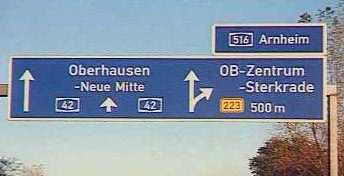
All routes are posted, regardless of highway type.
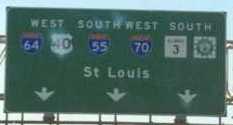
Depends on the state. While some states have no rule about simultaneous routes, others require all of them be posted. A few states (Colorado) only post the most-important route and hide the rest.
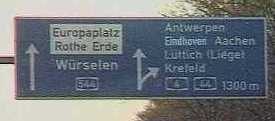
Photo shows A-544 branching off from its parent, A-44.
There is no rules for 2-digit numbers. Most 3-digit numbers follow the 3-digit interstate pattern. However, duplicates are not allowed.
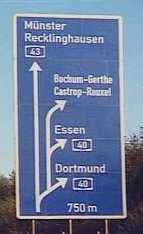
Top city on distance sign above route number (in this case, Munster) is the nearest major city on the autobahn you're currently on (here, A-43). On major freeway junctions, the control cities of other highways are also listed to the right of the sign.
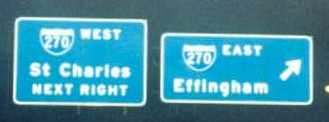
Depends on state. Some states use the nearest major city on a particular highway (see photo on the simultaneous routes), others uses local destinations (above, in this case of I-270 in Illinois, which considers it a rural interstate despite it being only 20 minutes from St. Louis). In some states, both methods may be used. Note that there are a few highways that don't have control cities at all.
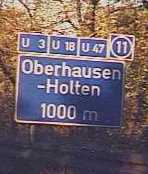
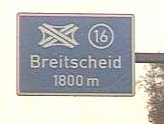
A diagram of what kind of freeway junction is always given in the initial guide sign, along with junction name and interchange number. However, in the next guide sign, the interchange number isn't posted and any route numbers involved are posted with their control cities.
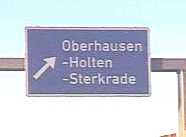
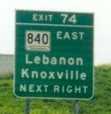
Diagrams of freeway junctions is never given unless the interchange is a confusing interchange. The interchange number and involved route numbers are almost always posted. The interchange number can be distinguished here due to the fact it is placed on a tab, usually on a wide or narrow format. The tab is placed on the top of the guide sign, and is usually right aligned unless the exit is on the left-hand side of the highway, where in that case, the alignment is on the left side. The distance is always given on initial guide sign but sometimes, the distance to the junction isn't given on the second guide sign like this one shown here.